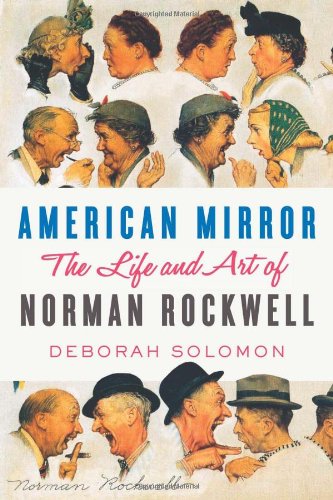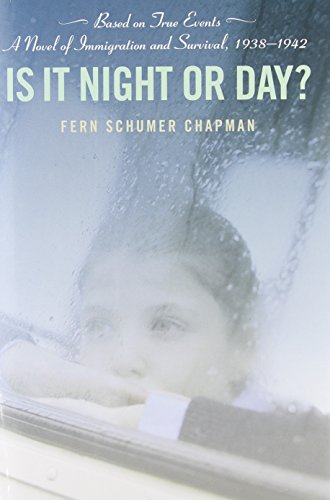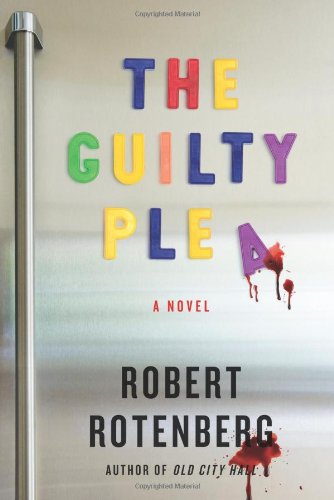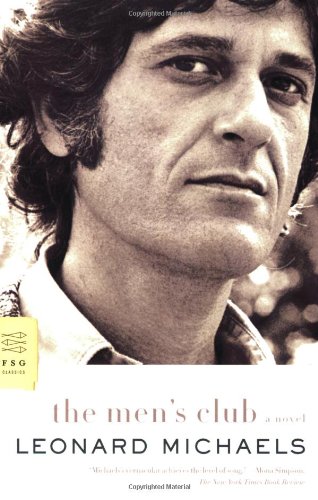Fee Download American Mirror: The Life and Art of Norman Rockwell, by Deborah Solomon
American Mirror: The Life And Art Of Norman Rockwell, By Deborah Solomon. Bargaining with reading habit is no need. Reviewing American Mirror: The Life And Art Of Norman Rockwell, By Deborah Solomon is not sort of something sold that you can take or otherwise. It is a thing that will alter your life to life a lot better. It is the many things that will offer you lots of points around the globe and this universe, in the real life as well as right here after. As what will be made by this American Mirror: The Life And Art Of Norman Rockwell, By Deborah Solomon, just how can you bargain with the thing that has numerous advantages for you?

American Mirror: The Life and Art of Norman Rockwell, by Deborah Solomon

Fee Download American Mirror: The Life and Art of Norman Rockwell, by Deborah Solomon
American Mirror: The Life And Art Of Norman Rockwell, By Deborah Solomon. Haggling with reading habit is no requirement. Checking out American Mirror: The Life And Art Of Norman Rockwell, By Deborah Solomon is not sort of something marketed that you can take or not. It is a thing that will transform your life to life much better. It is the many things that will give you several points worldwide as well as this cosmos, in the real life and also here after. As what will be made by this American Mirror: The Life And Art Of Norman Rockwell, By Deborah Solomon, how can you negotiate with the many things that has lots of perks for you?
But below, we will certainly reveal you astonishing point to be able consistently review guide American Mirror: The Life And Art Of Norman Rockwell, By Deborah Solomon anywhere and also whenever you occur and time. The e-book American Mirror: The Life And Art Of Norman Rockwell, By Deborah Solomon by just could help you to understand having the publication to read every time. It won't obligate you to consistently bring the thick book any place you go. You can simply keep them on the gadget or on soft documents in your computer system to constantly review the area at that time.
Yeah, hanging out to read the e-book American Mirror: The Life And Art Of Norman Rockwell, By Deborah Solomon by on-line can additionally give you good session. It will ease to interact in whatever condition. This way can be a lot more intriguing to do as well as simpler to review. Now, to obtain this American Mirror: The Life And Art Of Norman Rockwell, By Deborah Solomon, you can download in the web link that we supply. It will assist you to get easy method to download and install the book American Mirror: The Life And Art Of Norman Rockwell, By Deborah Solomon.
Guides American Mirror: The Life And Art Of Norman Rockwell, By Deborah Solomon, from simple to complex one will certainly be a quite helpful jobs that you can take to change your life. It will not give you unfavorable statement unless you don't get the definition. This is undoubtedly to do in reviewing an e-book to get over the definition. Commonly, this e-book entitled American Mirror: The Life And Art Of Norman Rockwell, By Deborah Solomon is checked out due to the fact that you truly like this sort of e-book. So, you can get simpler to recognize the impression and significance. Once again to constantly bear in mind is by reviewing this publication American Mirror: The Life And Art Of Norman Rockwell, By Deborah Solomon, you could satisfy hat your interest begin by completing this reading publication.

"Welcome to Rockwell Land," writes Deborah Solomon in the introduction to this spirited and authoritative biography of the painter who provided twentieth-century America with a defining image of itself. As the star illustrator of The Saturday Evening Post for nearly half a century, Norman Rockwell mingled fact and fiction in paintings that reflected the we-the-people, communitarian ideals of American democracy. Freckled Boy Scouts and their mutts, sprightly grandmothers, a young man standing up to speak at a town hall meeting, a little black girl named Ruby Bridges walking into an all-white school―here was an America whose citizens seemed to believe in equality and gladness for all.
Who was this man who served as our unofficial "artist in chief" and bolstered our country's national identity? Behind the folksy, pipe-smoking façade lay a surprisingly complex figure―a lonely painter who suffered from depression and was consumed by a sense of inadequacy. He wound up in treatment with the celebrated psychoanalyst Erik Erikson. In fact, Rockwell moved to Stockbridge, Massachusetts so that he and his wife could be near Austen Riggs, a leading psychiatric hospital. "What's interesting is how Rockwell's personal desire for inclusion and normalcy spoke to the national desire for inclusion and normalcy," writes Solomon. "His work mirrors his own temperament―his sense of humor, his fear of depths―and struck Americans as a truer version of themselves than the sallow, solemn, hard-bitten Puritans they knew from eighteenth-century portraits."
Deborah Solomon, a biographer and art critic, draws on a wealth of unpublished letters and documents to explore the relationship between Rockwell's despairing personality and his genius for reflecting America's brightest hopes. "The thrill of his work," she writes, "is that he was able to use a commercial form [that of magazine illustration] to thrash out his private obsessions." In American Mirror, Solomon trains her perceptive eye not only on Rockwell and his art but on the development of visual journalism as it evolved from illustration in the 1920s to photography in the 1930s to television in the 1950s. She offers vivid cameos of the many famous Americans whom Rockwell counted as friends, including President Dwight Eisenhower, the folk artist Grandma Moses, the rock musician Al Kooper, and the generation of now-forgotten painters who ushered in the Golden Age of illustration, especially J. C. Leyendecker, the reclusive legend who created the Arrow Collar Man.
Although derided by critics in his lifetime as a mere illustrator whose work could not compete with that of the Abstract Expressionists and other modern art movements, Rockwell has since attracted a passionate following in the art world. His faith in the power of storytelling puts his work in sync with the current art scene. American Mirror brilliantly explains why he deserves to be remembered as an American master of the first rank.
- Sales Rank: #328165 in Books
- Published on: 2013-11-05
- Released on: 2013-11-05
- Original language: English
- Number of items: 1
- Dimensions: 9.09" h x 1.62" w x 6.43" l, 1.69 pounds
- Binding: Hardcover
- 512 pages
From Publishers Weekly
In this well-paced, insightful biography of the iconic illustrator for the Saturday Evening Post, art critic Solomon (Utopia Parkway: The Life and Work of Joseph Cornell) reveals an enormously complicated man whose wholesome vision of America was not merely commercial kitsch, but art that sprung from an emotional life fraught with anxiety, depression, and self-doubt. This sympathetic portrait depicts a repressed and humble Rockwell—a fastidious realist whose style and obsessions clashed with the values of modernism. Thrice married and an apathetic husband, he clearly preferred the companionship of male friends and was likely a closeted homosexual. Rockwell also had an obsessive-compulsive personality and received therapy from the psychoanalyst Erik Erikson, who became a crutch as his second wife slipped into manic alcoholism. Solomon effectively refutes common misperceptions of his work, showing that Rockwell did not promote stereotypes, suburban conformity, or cater his work to the Post&'s demands. In addition, the author perceptively highlights the paintings&' narrative intelligence, comedy, and technical skill. Though Solomon opts to simplify and quickly dismiss criticism of Rockwell (such as Dwight Macdonald&'s), her substantive narrative captures the abundant complexities of this unusual artist, and reclaims him as a master storyteller. 8 pages of color illus. Agent: Amanda Urban, ICM. (Nov.)
From Booklist
*Starred Review* Esteemed art critic and biographer Solomon turns our perception of Norman Rockwell inside out in this fast-paced yet richly interpretative inquiry. Rockwell became famous for creating 323 meticulously rendered, witty, and touching covers for the spectacularly popular Saturday Evening Post between 1916 and 1962. Precise in their detail and expressive in their psychology, Rockwell’s narrative depictions of all-American small-town life are charming and rascally, yet Solomon discerns sorrow. She reads his many portraits of exuberant boys as a rewriting of his own unhappy past as a runty kid in cramped New York apartments. Drawing was his solace and illustration his goal, though for all his success, he felt anachronistic as abstract expressionism flourished, and his “fastidious realism” seemed quaint. But that wasn’t his greatest source of frustration. A workaholic neat-freak, Rockwell—whose first wife divorced him due to mental cruelty, and whose second, the mother of his three sons, became an institutionalized alcoholic—was happiest in the company of young men. As Solomon points out manifestations of “homoerotic desires” in Rockwell’s brilliantly composed paintings, her sensitivity to his struggles deepen appreciation for his virtuosic artistry and for his valor in using his work to champion civil rights and nuclear disarmament. Solomon’s penetrating and commanding biography is brimming with surprising details and provocative juxtapositions, just like Rockwell’s mesmerizing paintings. --Donna Seaman
Review
“In her engaging and ultimately sad biography of Norman Rockwell, Deborah Solomon fills in the partly known life of one of America's most famous and popular illustrator-artists . . . Ms. Solomon's book fully justifies a fresh look at his life. An art critic and author of biographies of Joseph Cornell and Jackson Pollock and a frequent contributor to The New York Times, she offers something new, entertaining and disturbing. Her challenge was to explain a life utterly different from Rockwell's humorous and optimistic paintings. She has told his story with a breadth of facts and narrative finesse. It is a revelation.” ―John Wilmerding, The New York Times
“Deborah Solomon has created a biography as vivid and touching as a Rockwell interior. This is the definitive biography of an American master who came in through the back door.” ―Steve Martin, author of An Object of Beauty
“American Mirror is a masterpiece--vivid, forthright and insightful. Through superb research and keen interpretation, Deborah Solomon tells the story of an artist so many thought they knew well, and perhaps did not know at all. An epic achievement.” ―Laurie Norton Moffatt, director of the Norman Rockwell Museum
“Norman Rockwell turns out not to have lived in the America he invented, the republic of station wagons, Santa Claus, and good citizenship. Deborah Solomon offers up a textured portrait of the man who carried no pictures of his family and never met a therapist he didn't like. Solomon masters foreground, background, and middle ground in this taut, beautifully written biography.” ―Stacy Schiff, author of Cleopatra: A Life and winner of the Pulitzer Prize for Biography
“Norman Rockwell remains our country's most beloved, most reviled, and most misunderstood painter. In American Mirror, Deborah Solomon tells his remarkable story with uncommon intelligence and grace.” ―Roz Chast, New Yorker cartoonist
“Deborah Solomon has done the culture a huge favor by placing Norman Rockwell among the most important American artists of the twentieth century. She reveals Rockwell in all his contradictions--celebrant of family values but indifferent husband, self-professed New Englander but restless traveler, apolitical for most of his life but by the end a passionate believer in civil rights. This is a great biography of a singular American genius, who has long deserved it.” ―Bruce McCall, New Yorker illustrator
“In American Mirror, Deborah Solomon has set herself, pointillist detail by detail, to unraveling the mystery of Norman Rockwell--the friendliest of painters who turns out to be the most complex of men. This is that rarest of books: the biography as page-turner, leading you effortlessly onwards.” ―Daphne Merkin, author of Enchantment
“Deborah Solomon's beautiful, complex life of Norman Rockwell shows how his beloved pictures--many of which appeared in the Saturday Evening Post--expressed Americans' hopes for the nation, even though they did not often show the real America.” ―Alan Brinkley, author of The Publisher: Henry Luce and His American Century
“Solomon's book is deeply researched, vigorously argued, and very well written.” ―Christopher Benfey, The New York Review of Books
“[A] highly readable, illuminating book . . . Solomon is blessedly free of art-world blather or snobbery, writing in a style that balances elegance, irony and straightforward storytelling.” ―Maria Puente, USA Today
“Don't be fooled by the controversy into thinking that this book is about Rockwell's sexual impulses. It isn't. Solomon traces his evolution as an artist, laying it alongside struggles in his own life. The result is a fascinating portrait of an underappreciated and often ridiculed artist.” ―Stephen L. Carter, Bloomberg (Best Books of 2013)
“American Mirror: The Life and Art of Norman Rockwell is a masterpiece of the biographer's art.” ―Lee Siegel, The New Yorker's "Page-Turner" blog
“Esteemed art critic and biographer Solomon turns our perception of Norman Rockwell inside out in this fast-paced yet richly interpretative inquiry . . . Solomon's penetrating and commanding biography is brimming with surprising details and provocative juxtapositions.” ―Donna Seaman, Booklist (starred review)
“In anticipation of Thanksgiving, every American who cherishes the traditions that make this country great should acquire a copy of American Mirror, Deborah Solomon's brilliantly insightful chronicle of the life of illustrator Norman Rockwell.” ―Jonathan Lopez, The Wall Street Journal
“American Mirror is a book of dazzling and accomplished detail.” ―Ben Davis, Slate
“[Deborah Solomon's] Rockwell biography is well-researched; her prose intelligent, accessible and touched occasionally with humor; her readings of Rockwell's paintings sharp and sensible.” ―Jim Higgins, Milwaukee Journal Sentinel
“[American Mirror] is a biography of the highest caliber . . . Solomon's intimate language is complemented by brisk pacing, providing a narrative that feels refreshing, nimble, and keyed into the present.” ―Rebecca Rubenstein, Kirkus Reviews
“Rockwell is a beloved figure in American art, and Solomon's compelling portrait offers the attention and insight that this complex man deserves.” ―Alice Cary, Bookpage
“[A] wonderful biography. . . . [Deborah Solomon] does a beautiful job of rescuing a man who became something of a cliche and making him fresh again.” ―Garrison Keillor, Tampa Bay Times
Most helpful customer reviews
144 of 158 people found the following review helpful.
biography dragged down by excessive opinion and interpretation
By Mark bennett
This is a sort-of biography of Norman Rockwell. Sort-of in the sense that its far more a collection of Deborah Solomon's opinions, interpretations and subjective analysis of Rockwell than it is a book about Rockwell. Rockwell is given the bug-on-a-slide treatment by an author dripping with condesenction. The introduction reads as if she is trying to explain to her friends why she would waste her time on such an undeserving subject.
We get a sort of chronological overview of his life mixed up with amature psychoanalysis of the most predictable and pedestrian variety. She finds anxiety. She finds obsessive-compulsive disorders. And following the pattern he was distant to his wives and children. And by giving him and his work a disturbed psychological subtext, he can be somewhat rehabilitated into the pantheon of artists.
There are interesting bits and pieces in the book. But they are only found after walking through mountains of trash. Art Historians by training who do biography seem inevitably to produce works far more dedicated to their own opinions rather than the subject of the book. She writes far too romantically about the "art world" for example. The "art world" is not primarily about meaningful context, judgement of works or understanding of works in the context of other works. The "art world" is about commerce and as much about selling the "personality" of the artist as it is the art. Its about making money for gallery owners and being good at parties. The author, by her background, obviously knows better. But still writes the romance view of the art world.
Solomon's fault as a writer is mostly a lack of any sort of originality in her analysis. The book, its opinions and its interpretations are utterly predictable from beginning to end. Predictable down to the authors page of sexuality baiting which was the cornerstone of the book's publicity campaign.
Then there is what she does with regard to pedophilia which is worthy of a specific example:
"we are made to wonder whether Rockwell's complicated interest in the depiction of preadolescent boys was shadowed by pedophilic impulses. But an impulse is not a crime. There is no evidence that he acted on his impulses or behaved in a way that was inappropriate for its time"
Note the careful poison pen craftsmanship of the words. She moves from "wondering" about something to saying its "not a crime". Then she finishes off with "acted on his impulses". No wondering anymore. No speculative tone anymore. She picks the words "acted on his impluses" to directly imply that he had them.
Going further, she doesn't straightforwardly say that he never acted inappropriate. She carefully inserts the qualifier "inappropriate for its time". The qualifier outright leaves the impression that by current standards, his behavior with male children was inappropriate. This is not the careful tone of a biographer. This is the sort of thing one finds in tabloids and gossip columns. Its all the worse because this is no untrained person. This is a graduate of the Columbia School of Journalism and a former employee of the New York Times. She knows what basic ethics are and certainly knows what she is doing by engaging in this style of writing.
The other thing to note about the book is that certain arguments it makes seem derivative of "Norman Rockwell: The Underside of Innocence" by Richard Halpern published in 2006. She mentions Halpern by name in the book, but never this particular book. It seems unlikely that she would not be familiar with the book and if she was familiar, she should have properly given it credit. Halpern does a sexualized analysis of Rockwell, but unlike Solomon avoids mixing that art analysis with standard biography.
I dont really much agree with the idea of Rockwell as Mirror either. If he was a mirror, it was a mirror reflecting a distilation of American commerical art rather than anything to do with real American life.
198 of 226 people found the following review helpful.
A dishonest, sleazy biography of an American icon
By Adventurous Reader
If allowed I would post no stars for Ms. Solomon's dishonest and irresponsible biography. I read this biography with interest, and then deep disgust. Innuendo replaces facts and there is a sleaziness in this biography that offends any careful reader who is looking for information about the man rather than ill founded sensationalism. This author suggests that Rockwell was a repressed gay man because he was skinny and that being gay led to secret pedophile feelings because he painted kids - ignoring the fact that children were one of the favorite magazine cover themes of the 1930's. If the subject of your work reveals your hidden sexual preferences than I suppose Andy Warhol was a secret, repressed heterosexual for all those paintings of Marilyn and Jackie, and that Sir Edwin Landseer who painted dogs was into bestiality. This book would be laughable if it wasn't so libelous. No wonder this writer was purportedly fired from the NY Times for distorting and recreating her interviews with Tim Russert and others. And no wonder Norman Rockwell's family who gave this woman their trust are now angry about this vicious and distorted biography. Filled with improvised facts and absurd theories Ms. Solomon admires the art only to use it to demean the man. What some people will write to make a buck. Shame on Ms. Solomon and shame on her editors for not fact checking this book, and for permitting slanderous suppositions to pass for critical observations.
93 of 104 people found the following review helpful.
Not the definitive bio on Norman Rockwell
By Richard
Forget the controversy for a moment. Looking at the book strictly from a literary standpoint, quite a lot of the writing is poor, clumsy and absurd. Solomon's observations of the art are sometimes laughable - for instance her assessment of Saying Grace (the painting that just sold at Sotheby's for 46 million) she describes the "TNARU", the last part of the Restaurant sign in the window - Solomon likens this to cubist lettering or perhaps an anagram of UN-ART or even better, a secret message of U R AN ANT (She can't seem to remember Norman Rockwell did not paint in the context of today's texting language, he painted this back in the 50's). Solomon cannot grasp the artistic mind - very simply the "TNARU" spelled backwards in the window is an even better design element and visual if not seen in it's entirety. Her assessment of No Swimming (1921) is ludicrous - instead of just seeing that it is clearly a story of some boys swimming where they shouldn't have been been and getting chased by an authority of some sort - Solomon muses, "Various scenarios are imaginable. Perhaps the boys are playing hooky from school. Or perhaps they violated Prohibition and bought a bottle of something alcoholic." Really? Only in Solomon's fevered imagination. No one else sees these ridiculous scenarios.
And throughout, her prose is painfully awkward - she mentions Rockwell's image of the city (see his Autobiography) a woman brandishing an umbrella and hitting a man with it in a vacant lot - but then she ruins this powerful imagery with "as if the woman were the evil twin of the Statue of Liberty". Huh? I found myself commenting on the margins about the absurdity of so many of Solomon's observations, judgements and assessments. And some of the reviewers find this intelligent prose? A good college professor would have taken Solomon to task for much of what she writes. But alas, there was no college professor helping to edit this. What we're left with is this mess of a book.
I await the definitive bio of Norman Rockwell, hopefully sometime in the future. We all need to cleanse our psyches from this one first.
See all 143 customer reviews...
American Mirror: The Life and Art of Norman Rockwell, by Deborah Solomon PDF
American Mirror: The Life and Art of Norman Rockwell, by Deborah Solomon EPub
American Mirror: The Life and Art of Norman Rockwell, by Deborah Solomon Doc
American Mirror: The Life and Art of Norman Rockwell, by Deborah Solomon iBooks
American Mirror: The Life and Art of Norman Rockwell, by Deborah Solomon rtf
American Mirror: The Life and Art of Norman Rockwell, by Deborah Solomon Mobipocket
American Mirror: The Life and Art of Norman Rockwell, by Deborah Solomon Kindle
** Fee Download American Mirror: The Life and Art of Norman Rockwell, by Deborah Solomon Doc
** Fee Download American Mirror: The Life and Art of Norman Rockwell, by Deborah Solomon Doc
** Fee Download American Mirror: The Life and Art of Norman Rockwell, by Deborah Solomon Doc
** Fee Download American Mirror: The Life and Art of Norman Rockwell, by Deborah Solomon Doc











